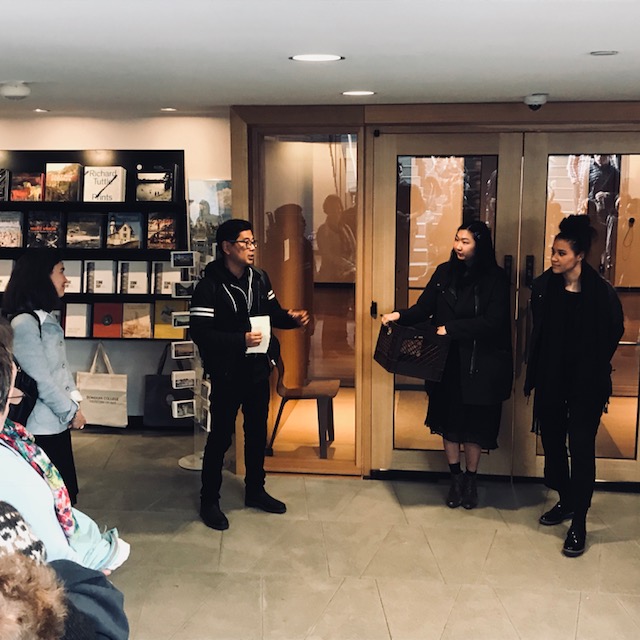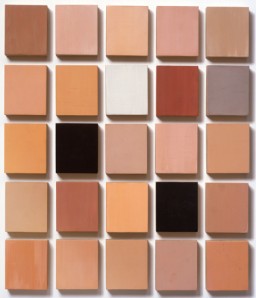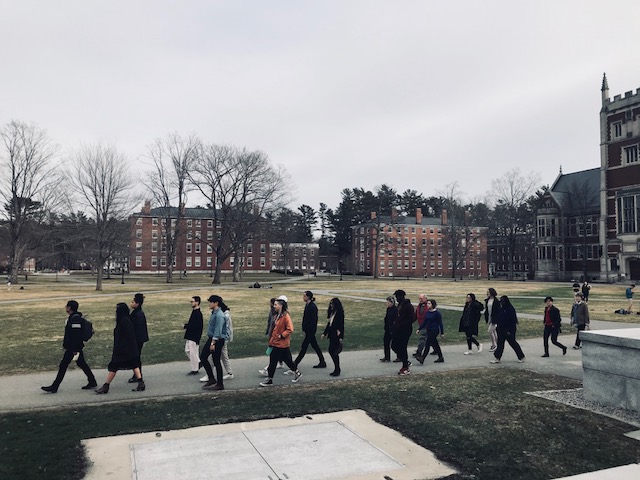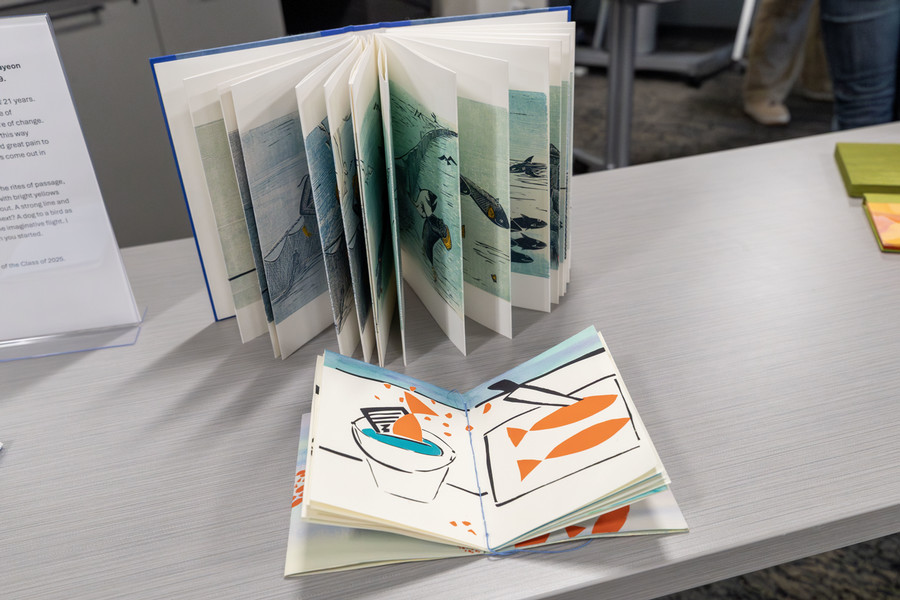Becoming Part of the Artistic Process with Visiting Artist Byron Kim
By Philip Kiefer '18
But when Byron Kim, who is a conceptual artist and critic based in New York, visited Bowdoin recently, he asked the audience to participate in his creative process instead of just sitting by and passively listening.
Kim led a group of community members in a participatory workshop that focused on “challenging visual perception as it relates to color and identity.” The workshop, called “Color and Visual Cognition with Byron Kim,” was held in conjunction with both an exhibition in the Art Museum curated by Hailey Beaman ’18 and June Lei ’18, and with Asian Heritage Month.

Beaman and Lei’s exhibition, Reading Room, was developed in collaboration with Kim, and consists of a crowd-sourced library with space to leave public reflections on the exhibit. The idea, says Beaman, is to “reconfigure the traditional museum space” – to create an exhibition centered on audience participation rather than observation.
Meanwhile, the reconfiguration of race, and the examination of how we see race and color, pervades much of Kim’s work. Many of his paintings are canvases painted entirely in someone’s skin tone. At Bowdoin, he was game to ask his audience to participate in an exploration of how they experience color.
His talk ranged across campus – he introduced the workshop in the lobby of the Art Museum, then led the group across the quad to the Visual Arts Center, where he had prepared two rooms. In the first, he led audience members through a meditation exercise, asking them, with eyes closed, to focus on each of their senses in turn through a series of activities – touching hands with nearby strangers, or focusing on the ambient smells of the room. Mostly, Kim asked participants to be curious about the novel world they experienced when their eyes were closed.

Byron Kim’s workshop on color and identity ranged across campus.
Then he led the group, with eyes still closed, to the second room, which he, Lei, and Beaman had blacked-out with duct tape and blankets. The audience was asked to open their eyes again – in the absolute darkness – and discuss the experience. In the discussion, Kim modeled a particular kind of curiosity: “I’ve always been envious of people who see color behind their closed eyes,” he said, “Are any of you seeing colors in here? What is that like?”
Beaman said that Kim’s talk was a continuation of Reading Room. “Since our exhibition is so much about interaction, we felt that having Byron lead a workshop rather than an artist talk was fitting and exciting!”



